The Terror and the Joy of this Work
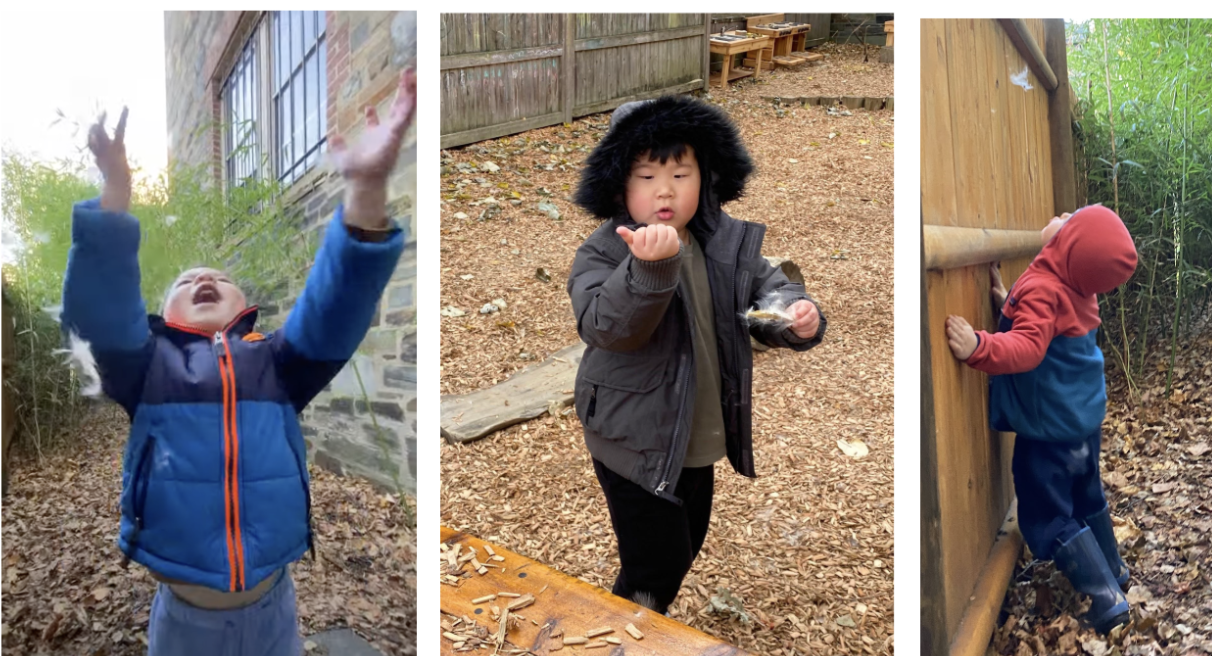
Ben Mardell
This essay acknowledges that teaching young children at a time of rapid climate change is emotionally fraught, explains what the work involves, and notes how it can be joyful.
“Let’s talk about something more pleasant”
A few months ago, I had an email correspondence with a former colleague. He suggested we get together. I responded affirmatively and asked if we could talk about my work exploring what teaching young children in this time of rapid climate change should involve. While he remained positive about getting together, he wrote regarding my proposed topic of conversation, “Let’s talk about something more pleasant.”
This is not an uncommon reaction. I have encountered educators reluctant to participate in what they perceive to be “doom and gloom” conversations. Colleagues report the same. I imagine that you, too, have encountered such reactions if you engage in this work.
Facing the question of teaching young children at a time of rapid climate change is emotionally fraught, even terrifying. Yet, given that climate change is and will continue to impact the lives of the children we teach, it is a critical issue to consider.
What is the terror?
The terror of this work lies in the likely and significant impacts of rapid climate change on the lives of the young children we care for. Every month for the last year and a half has seen the warmest temperatures for that month in modern times. Temperature records aren’t being broken; they’re being shattered. The earth has reached the 1.5 celsius increase that the Paris Accords vowed we should not go beyond.
We are seeing the results of this warming now: devastating drought in Africa, torrential flooding in Europe, and vast forest fires in North America. As to the future, warming temperatures are likely to mean:
-Sea level rise as polar ice caps melt.
-More powerful hurricanes as warming oceans provide additional energy for these storms.
-Disrupted weather patterns as gulf streams change.
-Crashes in marine populations as oceans become less hospitable to life.
These changes will impact food and water supplies, cause mass migration, and result in the extinction of countless species. How humanity will respond to these challenges is unclear. When I think about what the future will hold for Sammy, Finlay, Nathan, Anika and the other 51 young children I teach, I understand the desire to talk about something more pleasant.
What is the work?
Perhaps my former colleague thinks I spend my days talking to three- and four-year-olds about climate change. Not the case. Yes, there are ways to explain global warming to young children – they can visit a greenhouse and can apply the Goldilocks principle (not too hot or too cold) to life on earth. But I am not sure what preschoolers can do with this information. There is an age when children need to know what is happening to the planet. I don’t think that age is four. So I do not introduce the subject in my teaching (though I will honestly answer questions about the climate when children ask). Rather, guided by two intentions–fostering solidarity between children and nature and supporting long-term inquiry–my work at Newtowne involves projects and play.
Play, in part, because fostering solidarity with nature involves building relationships that are curious and empathetic. Play is a primary way children get to know and make friends with others.
Projects because, as children are guided in collective investigations of a topic or questions, they develop abilities to negotiate, debate, and create. The trying, revising, and exploring the unknown projects promote children’s adaptability, agency, collaboration, and resilience. The open-endedness of projects allows children to exercise their collective imagination.
Thus, my work at Newtowne involves creating opportunities for play and playful exploration, often of the flora and fauna around us.
What is the joy?
Projects and play. While they don’t guarantee joy – there are certainly moments of frustration during both – they create opportunities for joy. I have seen many such moments of joy in my last year and a half at Newtowne. These have occurred when the children are playing with leaves
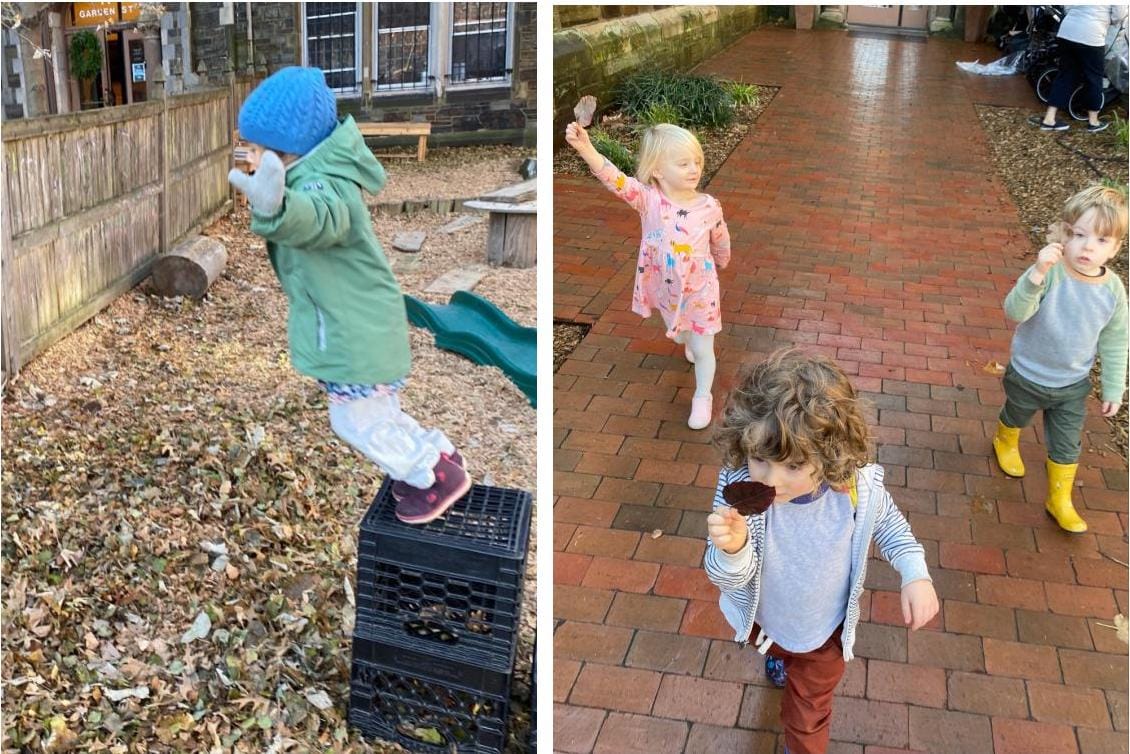
milkweed seeds,
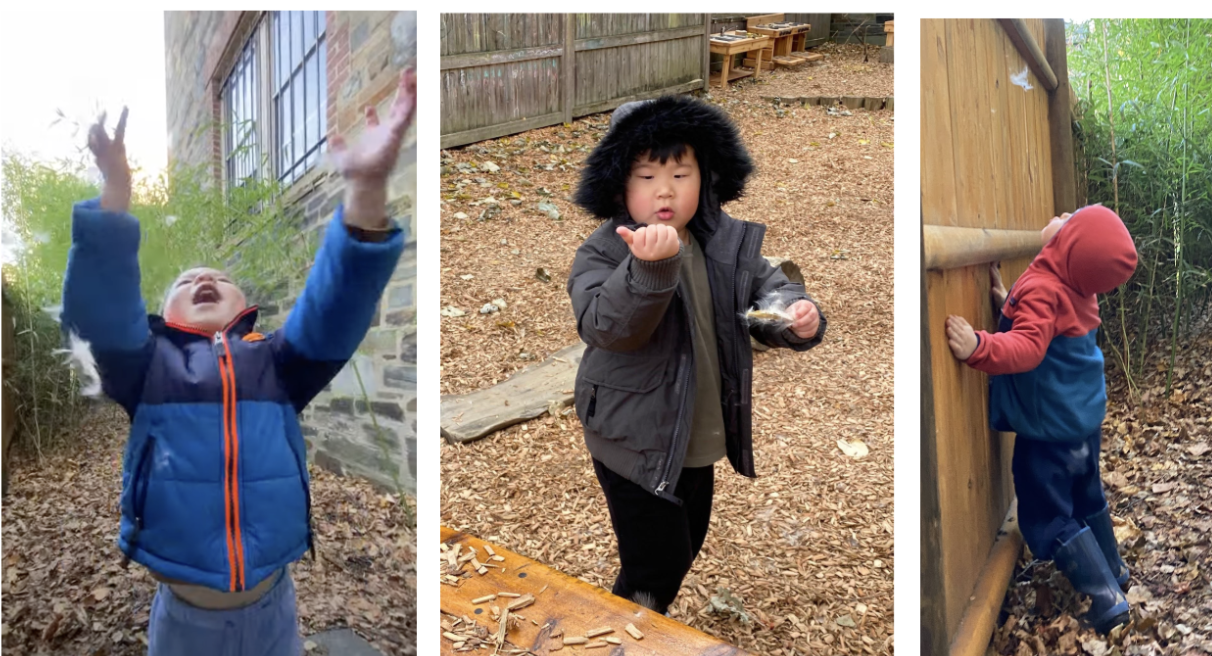
sticks,
and snow.
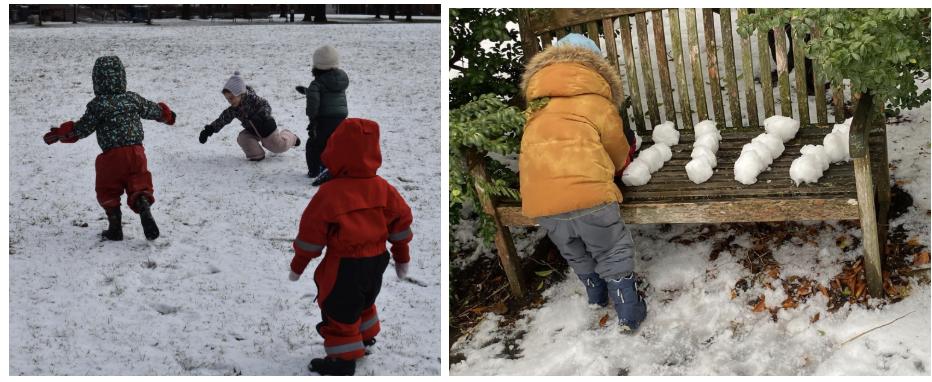
Joy has also resulted when connecting with the critters of our city (here the children have spotted a hawk).
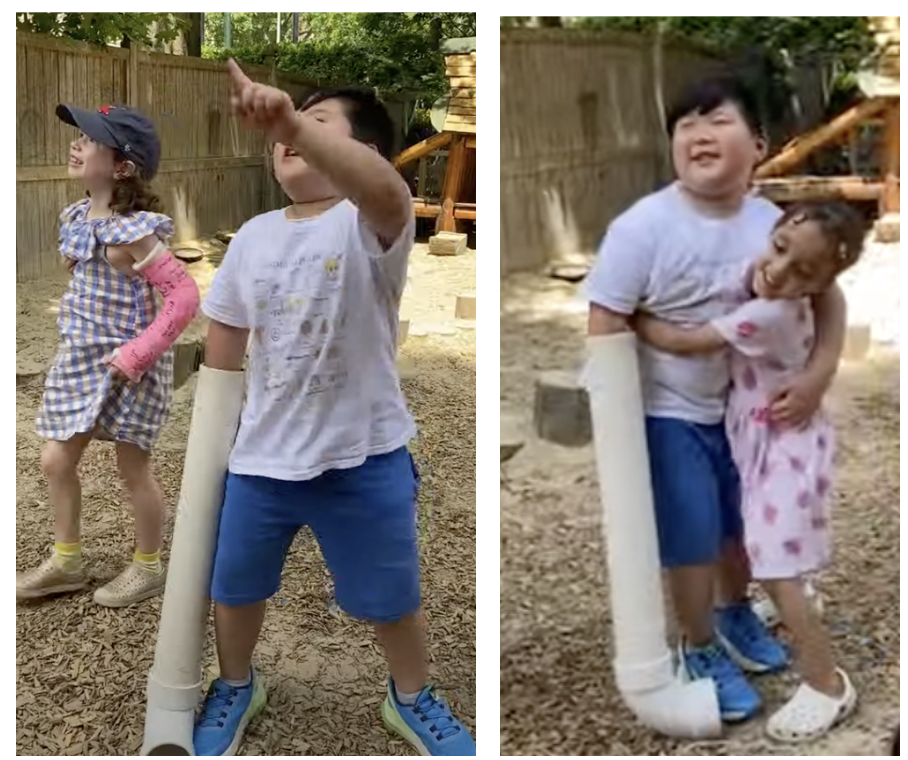
And projects. One of the most joyful parts of teaching is helping children do things they and their families didn’t know they could do. Projects, which unfold over time with opportunities to learn from and with peers, set the conditions for such joyful occasions. I’ve shared examples of such projects in videos about kindergartens studying the Boston Marathon and planning and changing the physical environment of their classroom. Thirty minutes into the Room Change video there is a scene where one of the kindergartners tells his mother about decorations he and his classmates spent several weeks planning and painting in the cubby area ceiling. The smile on Jack’s face speaks to the joy of this accomplishment.
The path to joy isn’t always easy
While one can stumble upon it, joy is often the result of hard work, overcoming obstacles, and finding unexpected solutions to problems. This is the case with the joy associated with projects and play. Play is not automatically joyful. The complexities of sharing, belonging, and friendship can come to the fore. Conflicts will occur. Tears are not uncommon. Project work involves the likelihood of encountering unexpected and sometimes uncomfortable problems and issues. In both projects and play, the path to joy isn’t always easy.
Years ago, during a seemingly innocent inquiry into the Beatles, my preschoolers and I encountered such an unexpected and uncomfortable issue. In between listening to Twist and Shout and pretending to be the Fab Four, the children learned that John was dead. “How did he die?” they wanted to know. Without forethought, I honestly told how John had been shot. And then added this was a reason I didn’t like when they pretended to shoot people in their play; that it reminded me of such sad events. A parent who overheard my comment got very upset. As a hunter, he worried that my anti-gun message might drive a wedge between him and his son. After some thought, I invited the parent to a class gathering. We shared that sometimes adults disagree about issues such as guns. Four-year-old Zoe immediately added, “And you can still be friends.” The children applauded. In the emotionally charged debate over guns, we had stumbled upon joy.
In the projects and play at Newtowne, the children and I will bump up against hard topics. Because our projects take children out into the world, they will encounter both the beauty and the unpleasantness of our city. On our walks we may see dead animals, dog poop and litter, and smell smoke (most recently the result of drought caused wildfires across New England).
The children no doubt will ask questions. My principles for responding to children’s queries are: don’t turn away, don’t over explain, and don’t lie. Indeed, there is lots of good advice out there about how we early childhood educators can talk with children about complex and hard topics. And the children will have the opportunity to do the work to find joy.
Sam’s take
My son Sam works for RMI, a think tank dedicated to decarbonizing the global energy system. He works against the backdrop of rapid climate change, and doesn't have the luxury of talking about things more pleasant. I asked Sam how he and colleagues navigate the terror inherent in their work and where they find joy. Despite working in different spaces, there were interesting parallels between our experiences.
Sam, too, has encountered folks hesitant to talk about his work. He imagines they assume he is making models about climate change and the end of the world. He isn’t, but rather helping electric utilities transition to sustainable energy.
This is a big, hard, and urgent task (decarbonizing today makes the future much brighter). There are complex economic calculations at work. There are multiple groups with seemingly competing interests involved. Where does he find joy in this work? Sam explains, “In collaboration, teamwork, and problem solving. It's a really interesting and complicated space and that makes it fun to work on.” Through struggle and hard work, Sam and his colleagues are finding joy in their work.
My friend Amy Rothschild notes the terror and joy of this work is the terror and joy of living in a time of rapid climate change. Even though some of us have the privilege to look away, at the end of the day, everyone is entangled in the reality that our ecosystem is being irrevocably altered. Of course, the appropriate level of struggle is different for adults and young children. The challenge for those of us raising young children is finding the right amount of hard. But if we don’t allow for the hard, the possibilities for finding joy are limited. Despite the impulse to talk about something more pleasant, we need to stay with the trouble.
Thanks to Amy Rothschild, Missy Arellano, Liz Merrill, Caitlin Malloy, and Amos Blanton for their comments on a previous draft of this essay.
